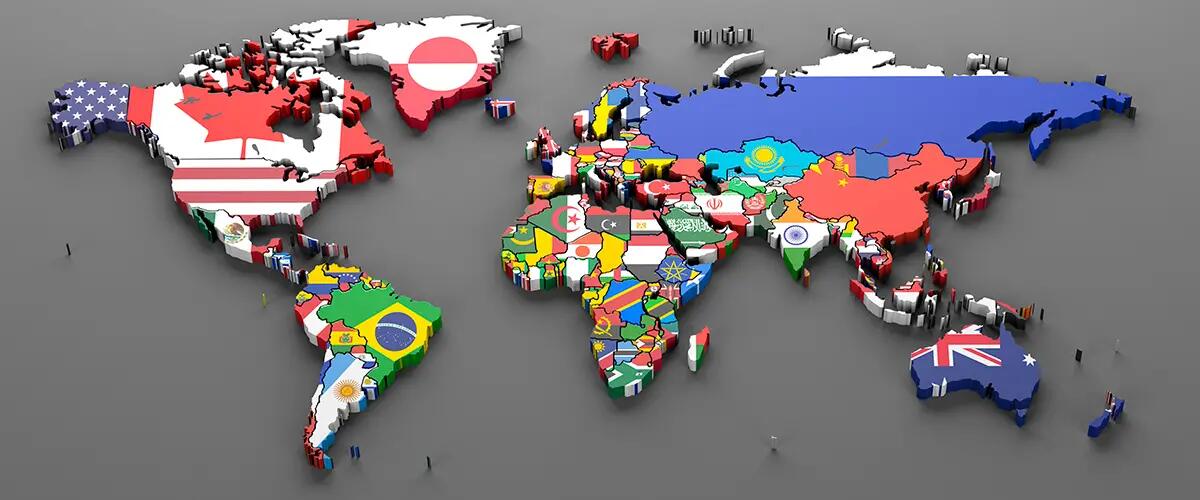
Photo Credit: carlosandresantos-iStock-Thinkstock
Leading global virtual teams
By Ramon Henson, Instructor, Management & Global Business
Faculty blog: Organizational Behavior and Global Management, named one of the "50 Best Blogs by Business Professors" by Online MBA.com.
When I ask the students in my MBA classes how many of them belong to cross-functional teams, between half to three quarters typically raise their hands. And when I ask them if they also belong to global teams (where members are from different cultures and are in different geographic locations), most of them keep their hands raised.
Many of you working with global companies today know that these global virtual teams are becoming more and more common. The reasons for the increasing frequency of these teams are not surprising. First of all, many organizations have recognized for some time that their talent pool is not restricted to their headquarters location, and so using the best and the brightest, no matter where they are located, makes sense. Second, many organizational solutions require cross-functional as well as cross-border collaboration, and restricting team membership to only one function or to those coming from only a single country (typically where its headquarters office is located) is not a smart strategy.
What do we know about the effectiveness of these teams? Unfortunately, there is not a lot of research on this subject. We can start with what I consider to be three of the best references on the subject of teams - Lencioni’s The Five Dysfunctions of a Team, Hackman’s Leading Teams, and Katzenbach and Smith’s The Discipline of Teams. At the risk of oversimplification, here are four key success factors that they and others say about what makes a team work effectively: the team has to have a compelling vision or goal, members need to trust one another, their skills (whether these are technical or social skills) need to be complementary, and a great deal of attention needs to be paid to team processes.
In my opinion, these same key success factors can be applied to global virtual teams, although how to make these factors work effectively becomes more complex and more challenging with these types of teams. Some of the challenges are obvious: differences in geography, time, language, diversity, culture, size and technology. Others, such as gaining the participation and commitment of team members, are subtler. To add to the challenges, many global team leaders are managing teams whose members do not report directly to them. Therefore, these team leaders have to learn to exercise “influence without authority.”
According to research conducted by Govindarajan and Gupta (2001), 82% of global teams they surveyed said that they fell short of their intended goals – they were not successful as teams. Govindarajan and Gupta identified five challenges of global virtual teams:
- Cultivating trust
- Overcoming communication barriers
- Aligning goals of individual team members
- Ensuring that the team possesses necessary knowledge and skills
- Obtaining clarity regarding team objectives
How can the four success factors I mentioned earlier help you as a global team leader address each of these challenges?
Cultivating trust. In many parts of the world, building relationships takes precedence over immediately working on the task requirements. Therefore, it is important for a team leader to make sure that at the very least global team members know one another on a personal level. Introduce team-building activities early on to make sure that members are comfortable working with each other and that they understand each other’s background, experience and what they bring to the table. It is simply not enough to assume that because you all work for the same company, you have common interests or shared goals. Although it may be difficult to have face-to-face meetings due to time or resource constraints, this is a worthwhile investment. Pay attention to group processes; for example, make sure that you establish protocols on how the team will communicate, how they will interact with each other during meetings, and other “ground rules” on how the team will function (e.g., who is responsible for informing team members who may not be present for a meeting, how disagreements and conflicts will be resolved).
Overcoming communication barriers. While most of your team members may speak English, their level of confidence with speaking English will vary. To overcome this, you may need to use translators from time to time. Make sure that agenda items are communicated ahead of time, and minutes of meetings are circulated after the meeting. Allow some time towards the end of meetings to encourage members to make comments if some have not done so. Develop clear operating procedures for your team meetings (e.g., agendas will be circulated three days in advance, identify the purpose for bringing up a topic – for discussion, recommendation, or making a decision). And follow up individually with team members who do not seem to be participating as actively in team meetings and probe carefully for possible reasons.
Aligning goals of individual team members. Do not assume that team members are all committed to the team goal. Make sure you understand the work priorities and performance goals of each of your team members. Watch for symptoms of non-alignment, e.g., members not showing up for meetings, not volunteering for tasks, not delivering on their commitments. Work to make sure that you link team goals with members’ performance objectives. This may mean having discussions with team members’ bosses to make sure that they are aware of the commitments required by global team membership and that they are fully supportive of their subordinates’ participation. This also means that you have to engage and excite the team with a compelling vision. This does not have to be some lofty abstract ideal, but has to be something that challenges and inspires, that taps into a business issue that members all agree is important for the organization to address. Have you linked the business impact of your team’s goals to the organization’s success?
Ensuring that the team possesses necessary knowledge and skills. While team members may have the necessary technical skills, does the team have the right balance of cognitive and interpersonal styles? In my experience with global teams, the better ones not only make sure skills are complementary, but that all members have opportunities to build their knowledge and skill base, not only in business and technical aspects, but also in two important areas: understanding and dealing with cultural differences, and building collaboration skills.
Obtaining clarity regarding team objectives. Is everyone on the team clear on what success looks like for the team? Are metrics well defined and are they agreed to by everyone? If you sense a lack of clarity, or lack of agreement, tackle this by bringing in the team sponsor (the person or group that you as team leader are accountable to for the team’s progress) to help clarify goals. Make sure that you define expectations and deliverables with the sponsor and communicate these to the team. The team sponsor can also be used to give some recognition to the team as it makes progress. Is everyone clear on his or her roles and responsibilities (especially for those who may still have their regular “day job” in addition to being a team member)? Apply a tool called RACI (which stands for Responsible, Accountable, Consulted, and Informed) to help clarify roles and responsibilities especially around decision-making.
Being aware of these challenges and some ways to address them should make the job of a global team leader a bit easier, and ultimately more rewarding and fulfilling for everyone on the team.
Govindarajan, V. and Gupta, A (2001). Building an effective global business team. MIT Sloan Management Review, 42(4), 65-71.
Press: For all media inquiries see our Media Kit


